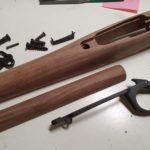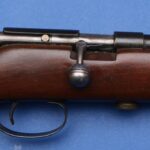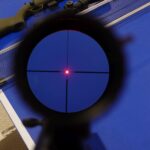While this article is mainly framed around hunting in Alberta, the story will be similar for other provinces and states. This article is for complete beginners to hunting. I assume you don’t have experienced family or friends to show you the ropes and you’re trying to do it on your own. If you do have family/friends who hunt, ask them instead of reading this article. This article is mainly geared to hunting small and big game and I haven’t spent much time talking about waterfowl because I don’t like duck/goose meat.
Step 1: Do your Hunters Education course
Yeah, I mean it seems obvious but this is a good first step. The hunters education course for Alberta is a decent overview of game species, legal requirements, and the like.
AHEIA (Alberta Hunter Education Instructor’s Association) does these courses AND they’re available online. The online software platform looks a bit dated, but it’s got a lot of good multimedia in there and it’s easy to truck through at your own pace.
Step 2: Get your PAL (Canada Gun License) and a few hunting guns
Many of the people I talk with already have their PAL and a few firearms. Note that it will take MONTHS after you submit your paperwork for your PAL to arrive, so don’t submit your PAL info a couple months before hunting season.
Small Game 22LR

This is where you should start. Any 22 is fine here but I recommend a bolt action or semi auto 22LR with a scope for beginners. The scope should be mounted as low as possible and it doesn’t have to have any crazy magnification on it: a 2-7 is fine. A rifle like this will be perfect on rabbits, grouse, and other small game. You can go used but many of these rifles are so cheap anyways that you might as well buy new.
For ammo, it. .. doesn’t really matter. You’re going to be shooting your game at 10-25 meters, ideally in the head. Standard velocity (SV) ammo will be a bit quieter, but won’t cycle reliably in some semi-autos. High velocity (HV) ammo will cycle more reliably in semi-autos. Both will kill small game just fine. Hollow points can do a bit more damage, but aren’t necessary if you’re just doing head shots. Accuracy from ANY ammo will probably be good enough for the distances we’re shooting.
Big Game Rifle

Bolt action, scoped, in any normal hunting cartridge. Don’t buy a big, bad scope: any 3-9 will be fine. A Savage Axis or similar is fine. You can buy used if you like.
If you eventually want to do Moose/Elk, you may want to go for a 308, 270, or 30-06. If you’re recoil sensitive or just want better ballistics, a 6.5 Creedmoor or 243 will be fine. The deer will not be able to tell the difference between getting hit with a 243 vs a 30-06, no matter what the fudds at the coffee shop say.
Shotgun for waterfowl/upland

A pump action 12 gauge from a popular name brand like Remington, Mossberg, etc, is the cheapest way to get into a shotgun. You can go used, but don’t get something so ancient that it can’t handle steel shot (required for waterfowl). You can use a shotgun for waterfowl (ducks&geese) and for upland birds like grouse.
Step 3: Where are you going to hunt?
In my opinion, this is one of the harder questions to answer. If you have friends/family with land, you could ask them if you can hunt on their land. Beyond that, you’ll need to find crown land, PLUZ land, or conservation areas designated for hunting. There will be more selection and fewer other hunters the further away you get from populated areas.
Some apps like iHunter can make it easier to find public land for hunting, or you can go to your local county website and find a county map: some will have them online for free. County maps will have land owner info, lease info, and public land info.
If you find lease or private land where you want to hunt, call the owner and ask for permission. Some lease-owners must allow access but might ask that you do certain things like not driving on some spots where a vehicle may damage the land, or to not damage certain fixtures, etc.
Step 4: What are you going to hunt?
Next, figure out what WMU (Wildlife Management Unit) the land you’re hunting is in and what you can hunt and when. For big game, it can be pretty confusing. Some of these are general tags that anyone can buy, some are by draw (lottery selection) only.

Game bird WMUs and regs are easier:

Step 5: Small game hunting and scouting
Game bird seasons start earlier and go later than most big game seasons, grouse are easier to hunt, easier to process, delicious, and so are a great place to start hunting. You can also hunt rabbit at the same time and at the very worst, you had a nice nature hike.
You can often find small game while just hiking as long as you know what to look or listen for. AND, you can scout the area for big game hunting at the same time.
Personally, I like hunting small game with a 22LR. Some guys use a shotgun for grouse. If you go that route, you’ll have to decide between going full choke and knocking off the head, or going for a wider choke and “seasoning” the meat with lead or steel shot. Lead is toxic and will accumulate and make you dumber so I do headshots with a 22LR. I can’t afford to get any dumber.
While scouting, you’re looking for game trails and choke points: places where deer are going to travel, because you want to find options where you’re going to set up once big game season starts. If you “bump” some deer: disturb them and they run off, take note of where it happened. They might hang out there once big game hunting season starts.

As of the writing of this article, you can hunt rabbits anytime of the year without license. They’re somewhat challenging to find but are easy to skin and go nicely in a stew.


Step 6: Big Game Hunting
Most new Albertan hunters will start big game hunting with a general whitetail tag: which basically good for any whitetail deer in many WMUs.
As most (but not all) general whitetail seasons are Nov 1- 30, it can be pretty fucking cold. You’ll need some good winter gear to be comfortable sitting still in a blind for 3 hours at a time in -20C weather.
Still hunting is sitting in one spot where you think the deer will pop up, basically setting up an ambush. In my opinion, it’s the best way a new hunter will get a deer. You don’t need to call or anything, just find a spot with lots of deer trails and wait. You may not see anything for 6-12 hours of accumulated hunting time, that’s normal. While you could use a pop-up blind or tree stand, you could also just sit on the ground in a good spot. You don’t necessarily need all the extra gear.

If you still hunt (and you probably will), you need to stay still. You can’t be fidgeting around because you’re cold. Camo isn’t super important when hunting deer but they’ll key in on movement & sound immediately. Your clothing and still hunt setup needs to be comfortable so you can sit still for long periods of time.

I wouldn’t recommend stalking for new hunters. Deer are pretty good at hearing and smelling people coming and you’ll probably just bump them and see white tails running away in the bush. That being said, stay alert as you move to your still hunting spot because you might find a deer on the way.

Winter hunting clothing tips
- Layers: make sure your base layer (socks, shirt, long johns, etc) are wool or something good at wicking sweat away from you. Costco has some decent stuff for decent prices. 3 good quality layers are better than 5 shitty cotton layers.
- Rough texture polyester or nylon will “swish” as you walk/move. Consider how loud your clothes are: this can give you away when prepping to take a shot on deer
- Get electric heated stuff if you can. The extra heat when you’re sitting still is very nice
- Bring more clothes than you need. Ideally, you’ve got a way to pack them or store them in pockets. Face mask, extra toque, etc.
- If you bring your wife/gf/kid, bring a blanket rolled up. They’ll need it and it’ll hide some fidgeting. For that matter if you bring your kid, bring some quiet snacks.
- Unzip your jacket/etc while you hike. If you trap a bunch of sweat in your boots/jacket/pants while hiking and then sit down, that sweat is going to make you cold
- If you’re going to be sitting in the bush watching a cutline, bring a “heat seat” of some kind. Don’t assume that there’ll be a convenient log to sit on
- Test out your clothing setup before a big hunting trip. Go for a 2 hour hike and see if your socks are soaked with sweat. Sit outside for 2 hours in the snow and wind and see if your jacket is drafty. You don’t want to cut your hunting trip short because you’re too cold or uncomfortable.
Depending on where you hunt and how far of a drive it is, you may have to winter camp closer to your hunting spot. Prepare appropriately.
After the shot
Assuming you did all the above and you found a whitetail deer in your sights and downed it. It’s normal to get a rush of adrenaline just before, during, and after the shot. It’s colloquially called “buck fever” and you might get the shakes. Humans are predators, your body is just prepping you to chase and get the kill. You should come down shortly after tagging it.
Depending where you got your deer, you may have to:
- Drive up to it with your pickup truck and throw it in the back (ideal)
- Drag it a short ways out of the bush, then do the above
- Gut it in the field, then haul/cart it out

Watch some YouTube videos on how to gut a deer. Make sure your knives are sharp. I’ll do a video on how I do it one of these days.
Some guys take their deer to the butcher. Personally, I’ve always done all the processing myself. Jerky is easy enough to DIY and you could probably do it in an apartment. Get a long knife, cut into jerky slices, cure overnight with a bit of liquid smoke added in, dehydrate in oven. Yeah, the smoked stuff will be better but who cares.
You can also do slow cooker or pressure cooker roasts, or cube the meat and do curry or whatever. Most deer meat will have a bit of a gamey taste to it and will be VERY lean, so you can’t cook it like a well marbled chunk of beef.





